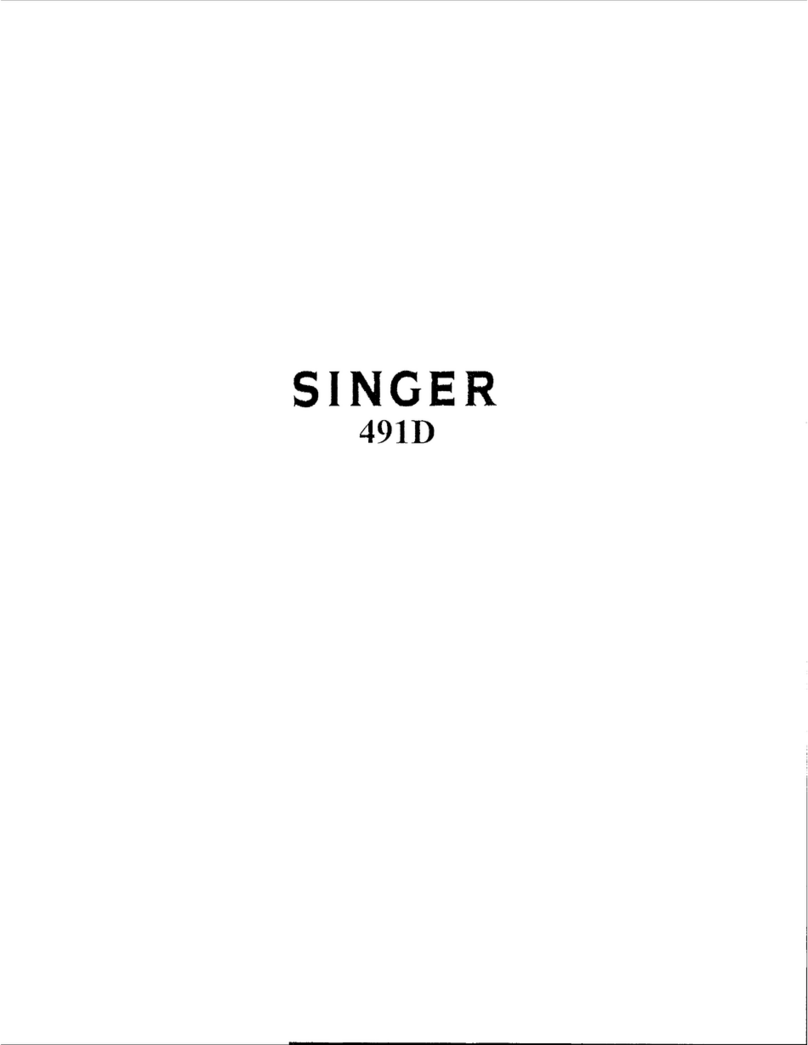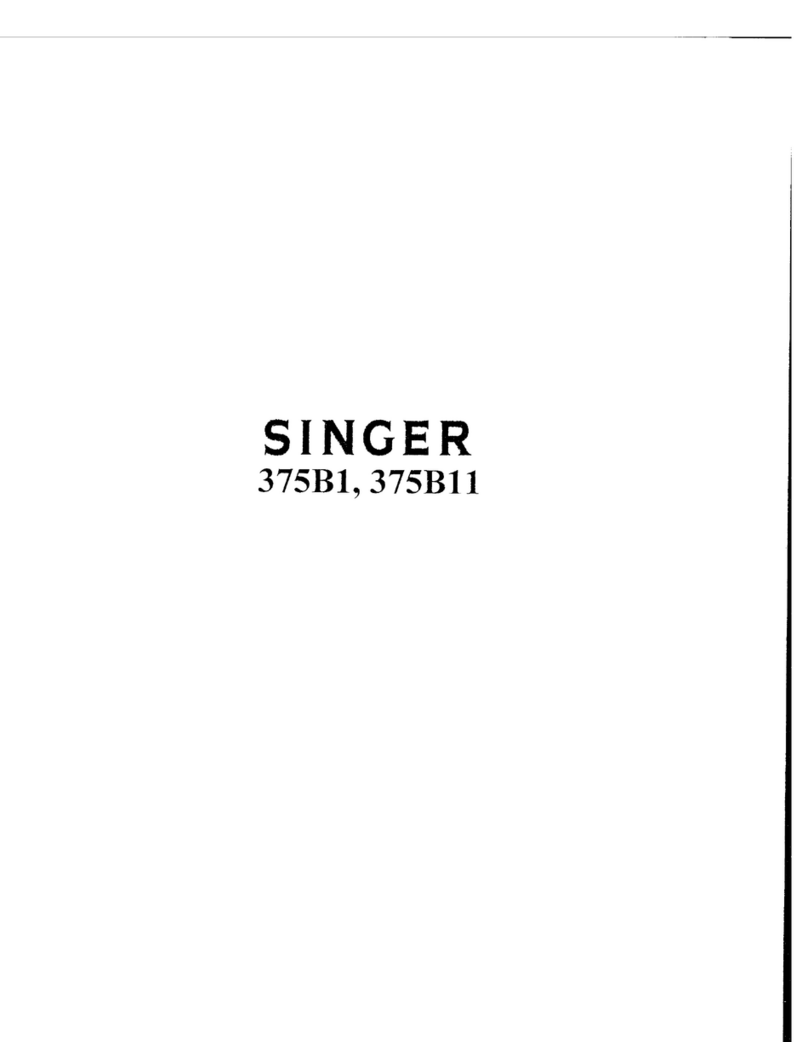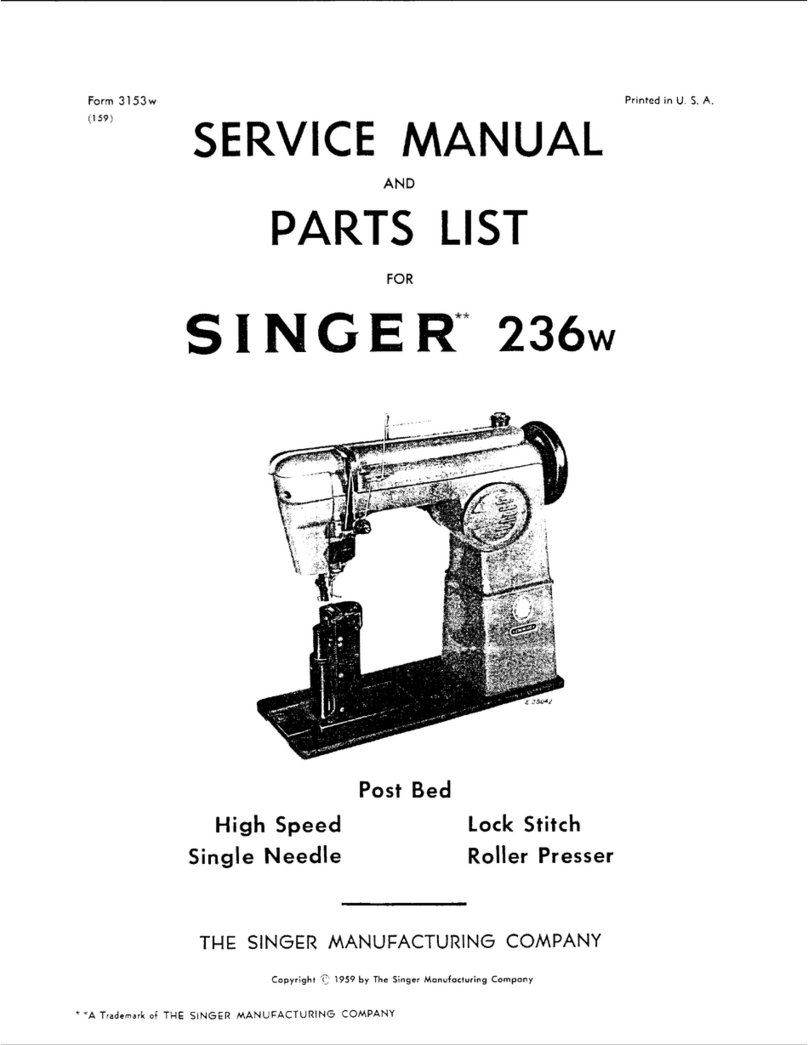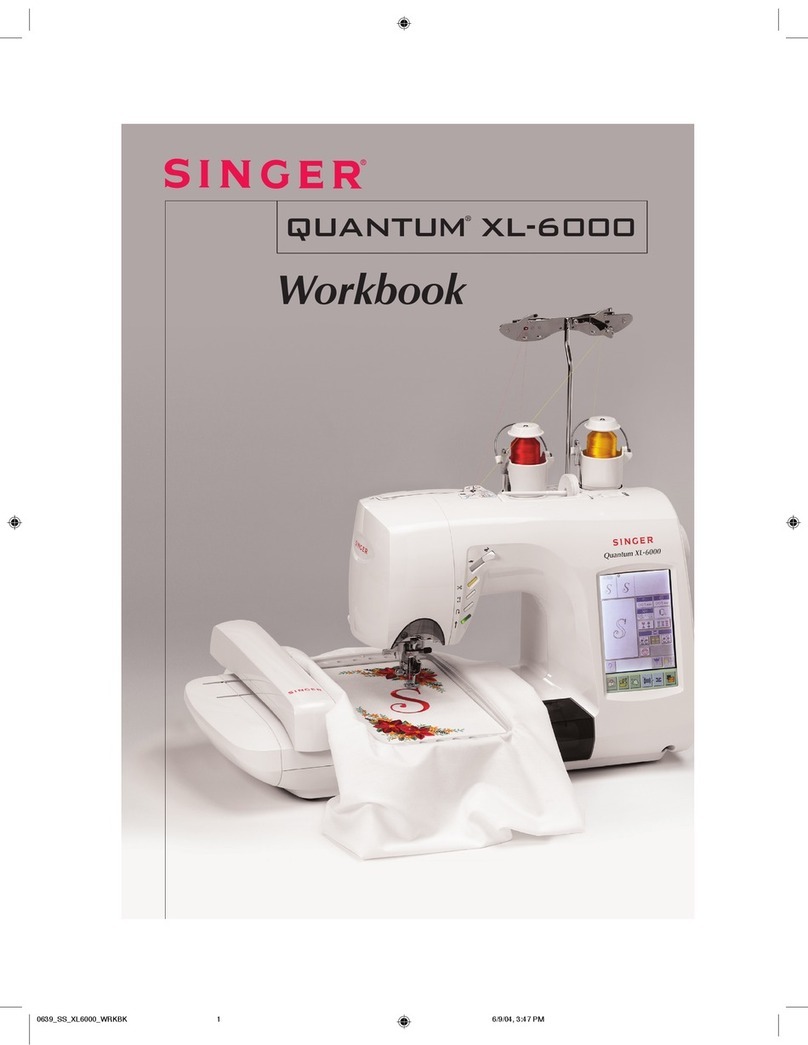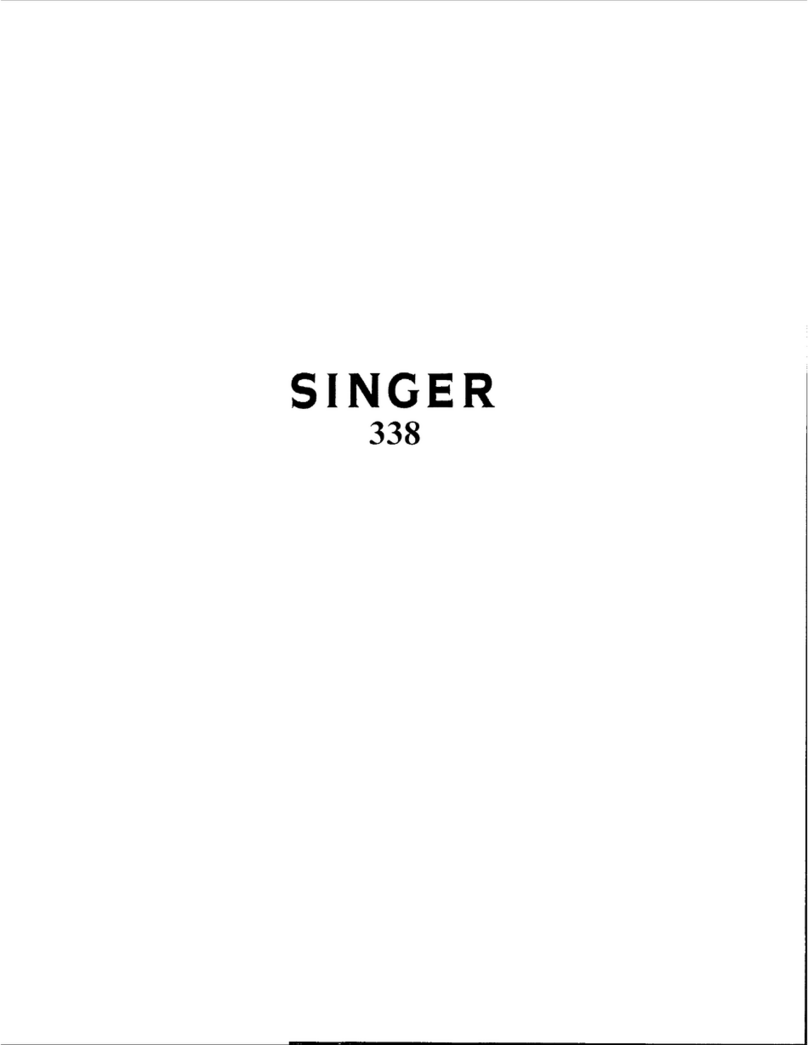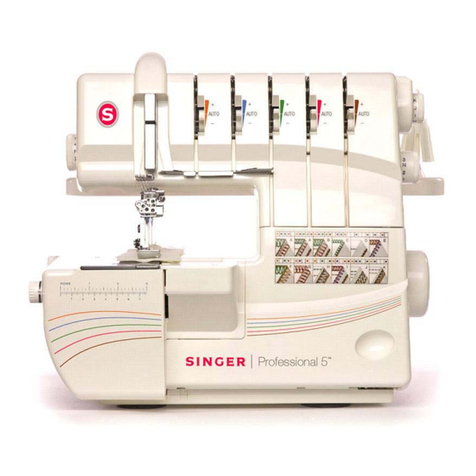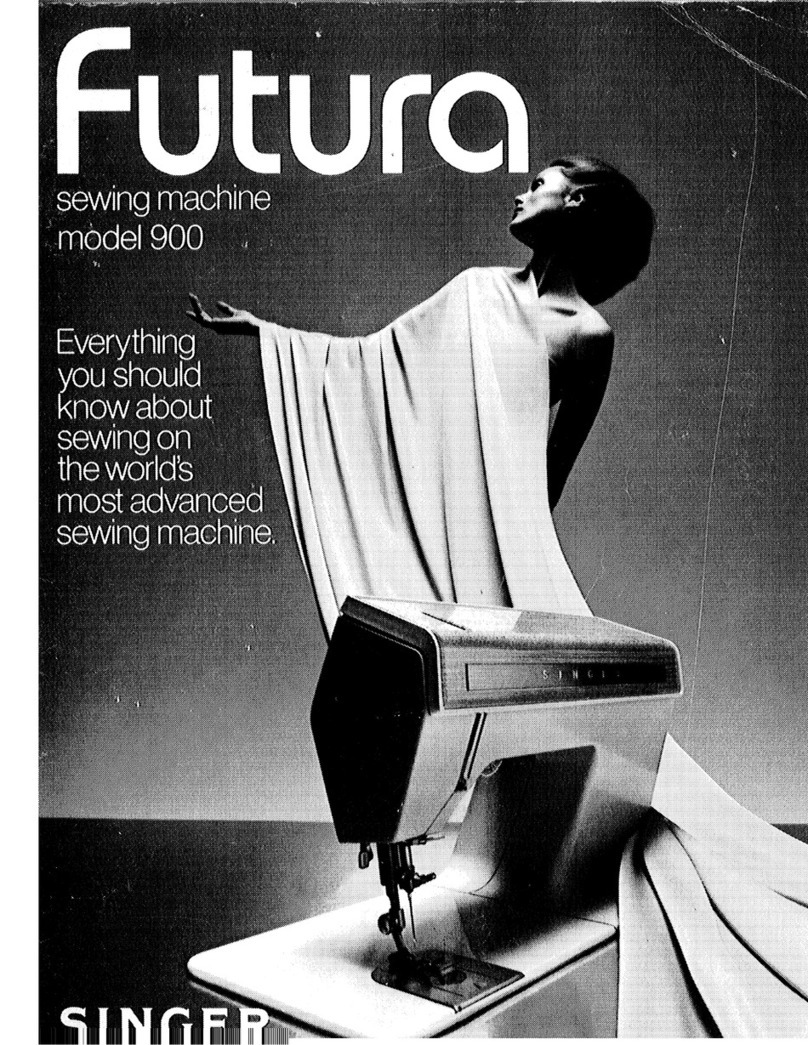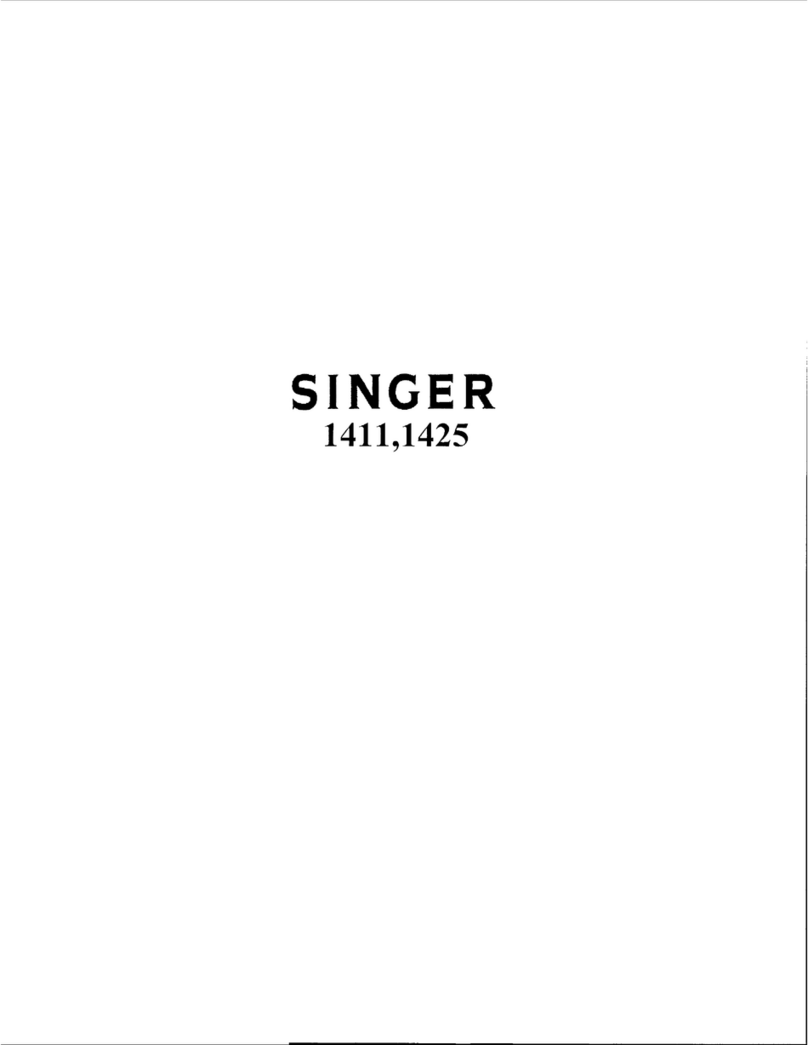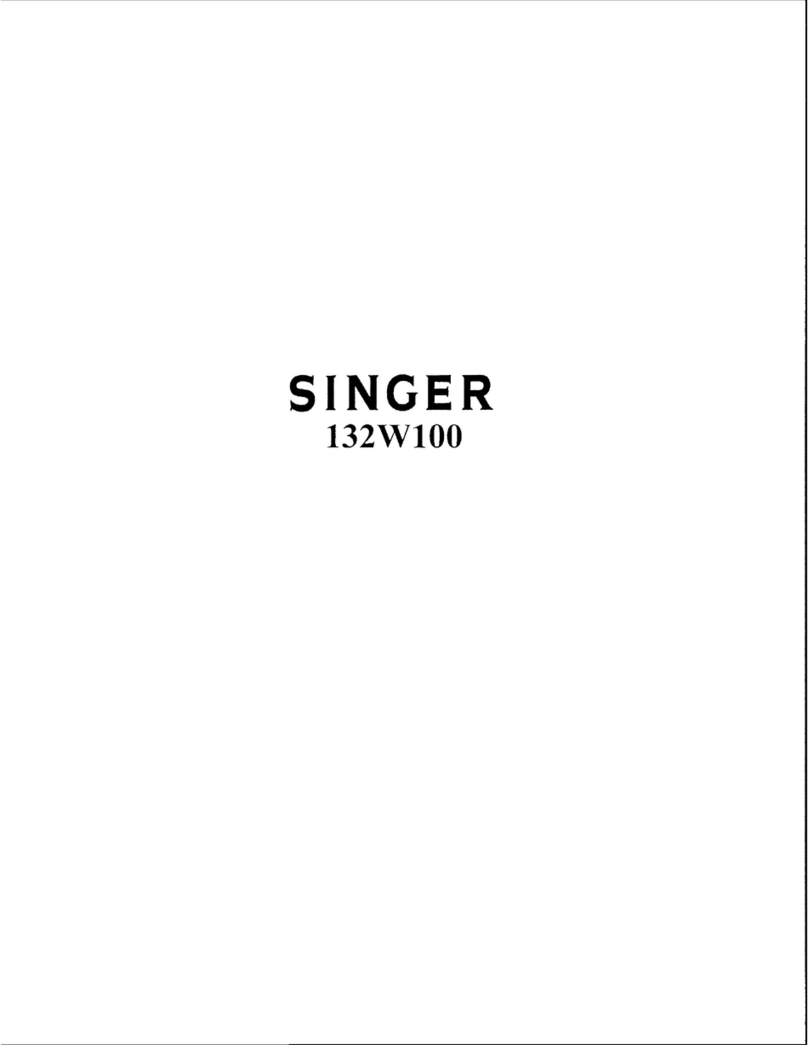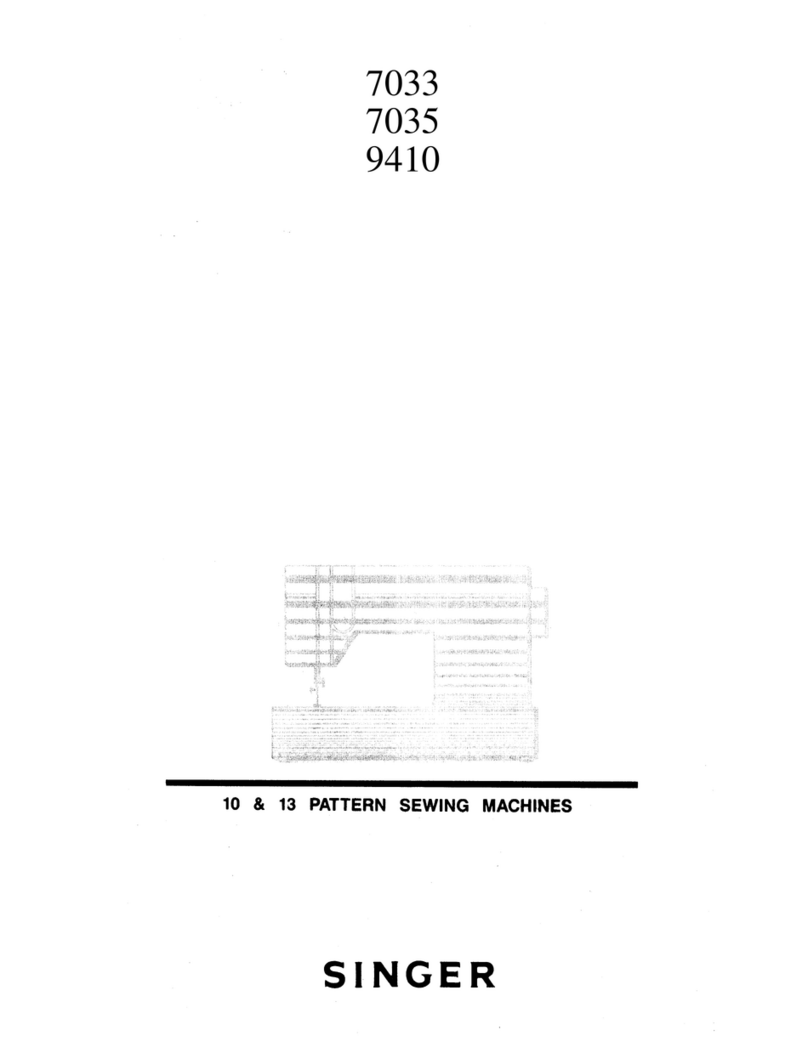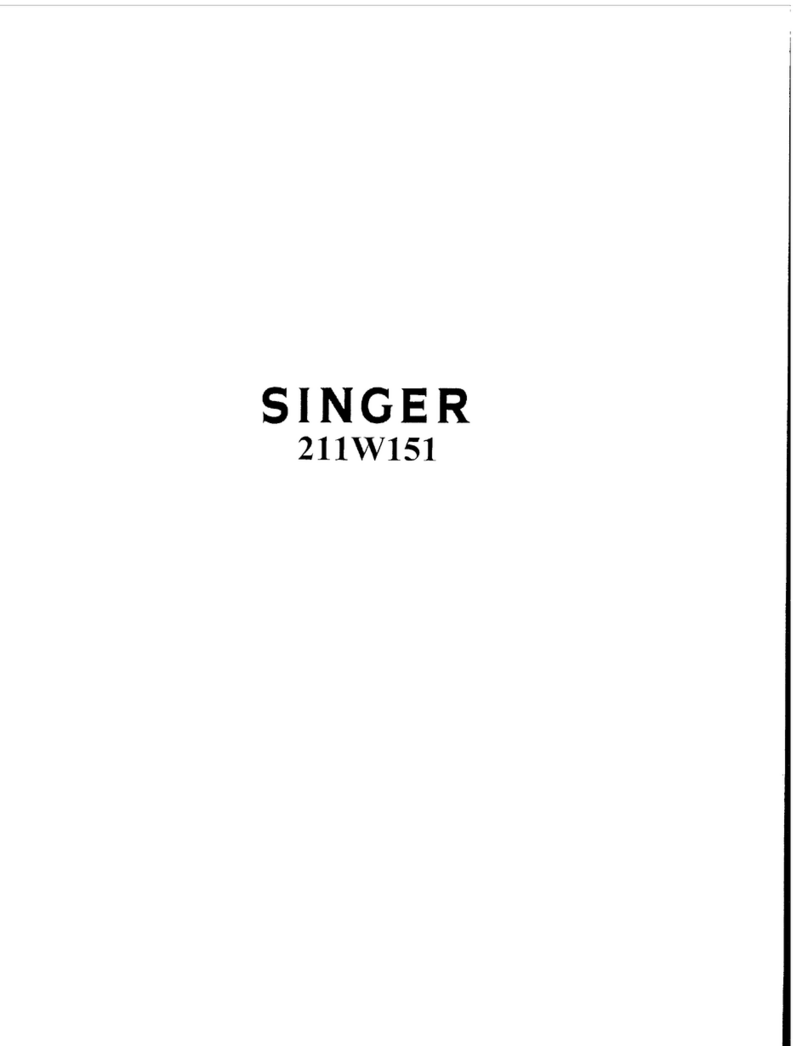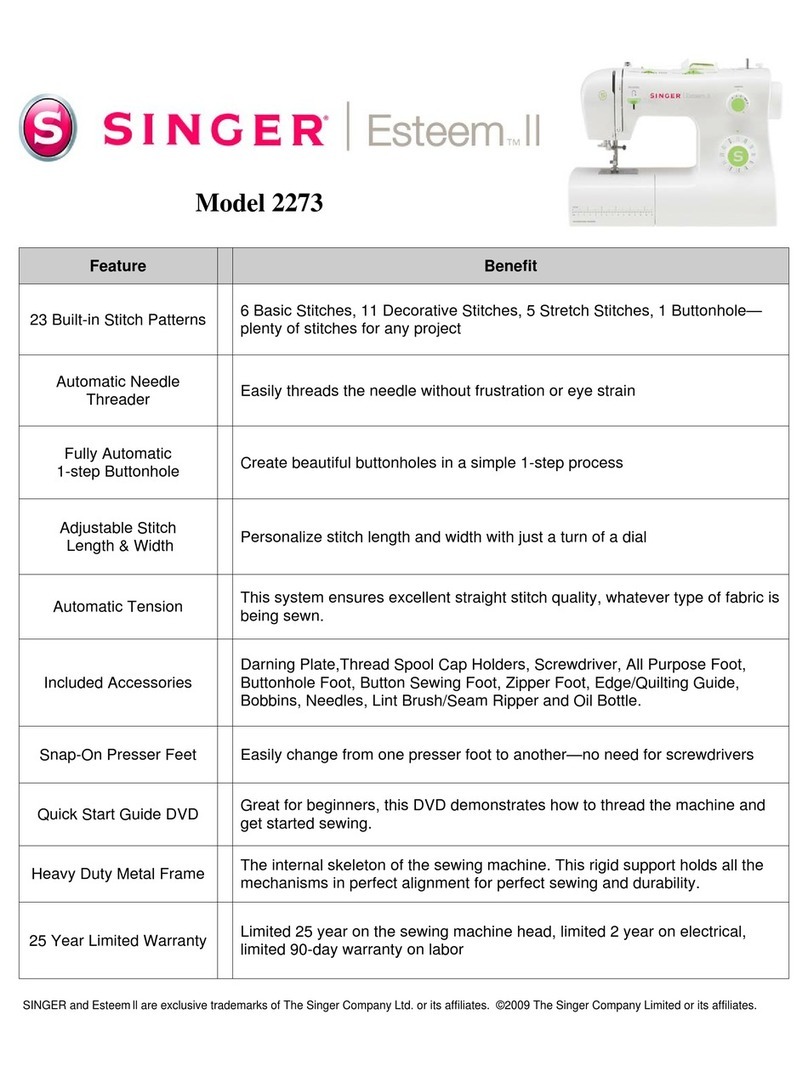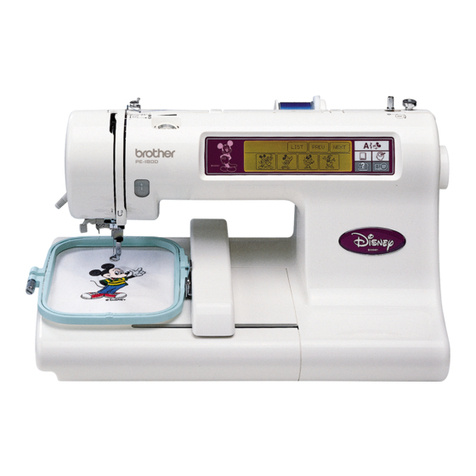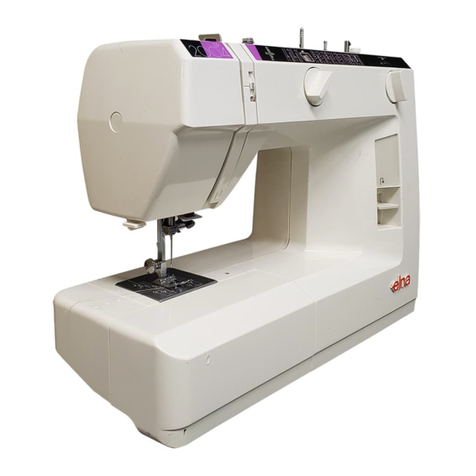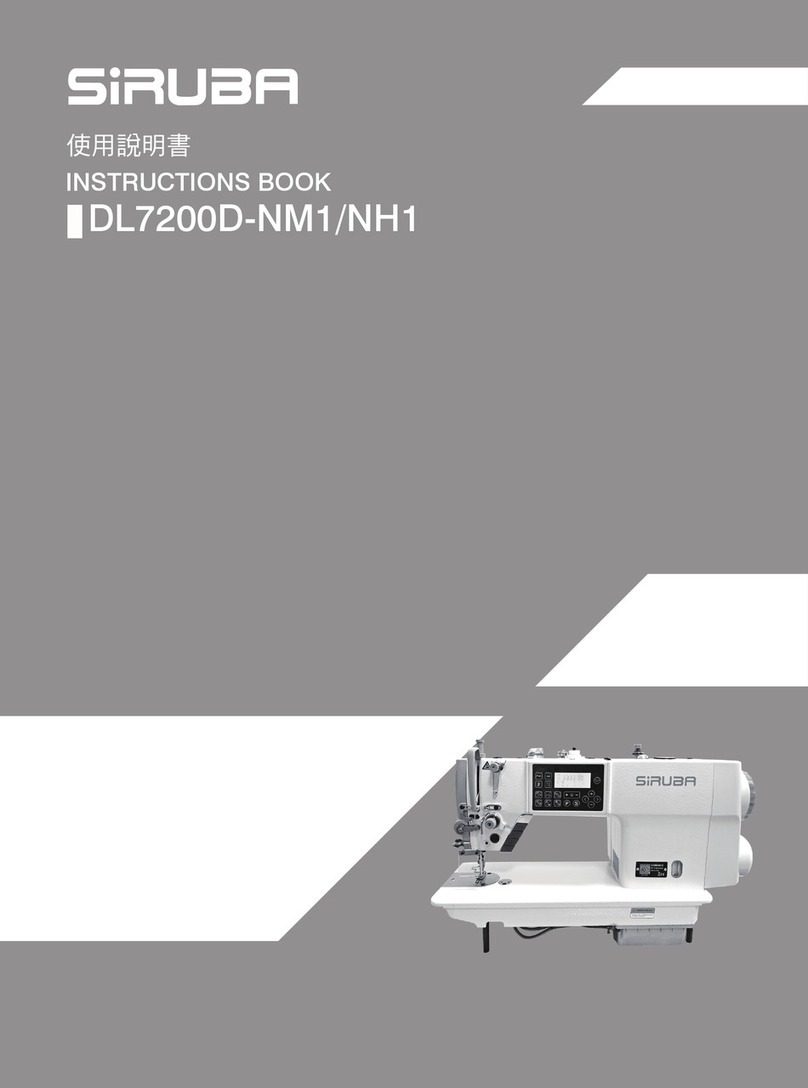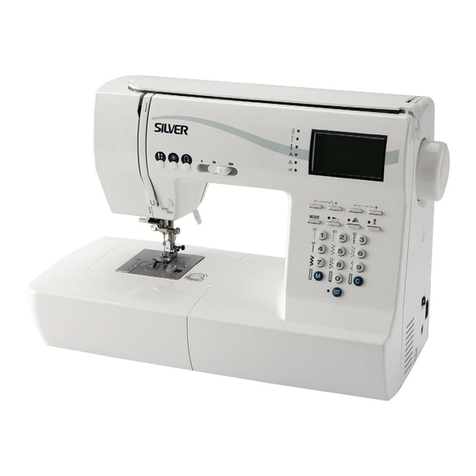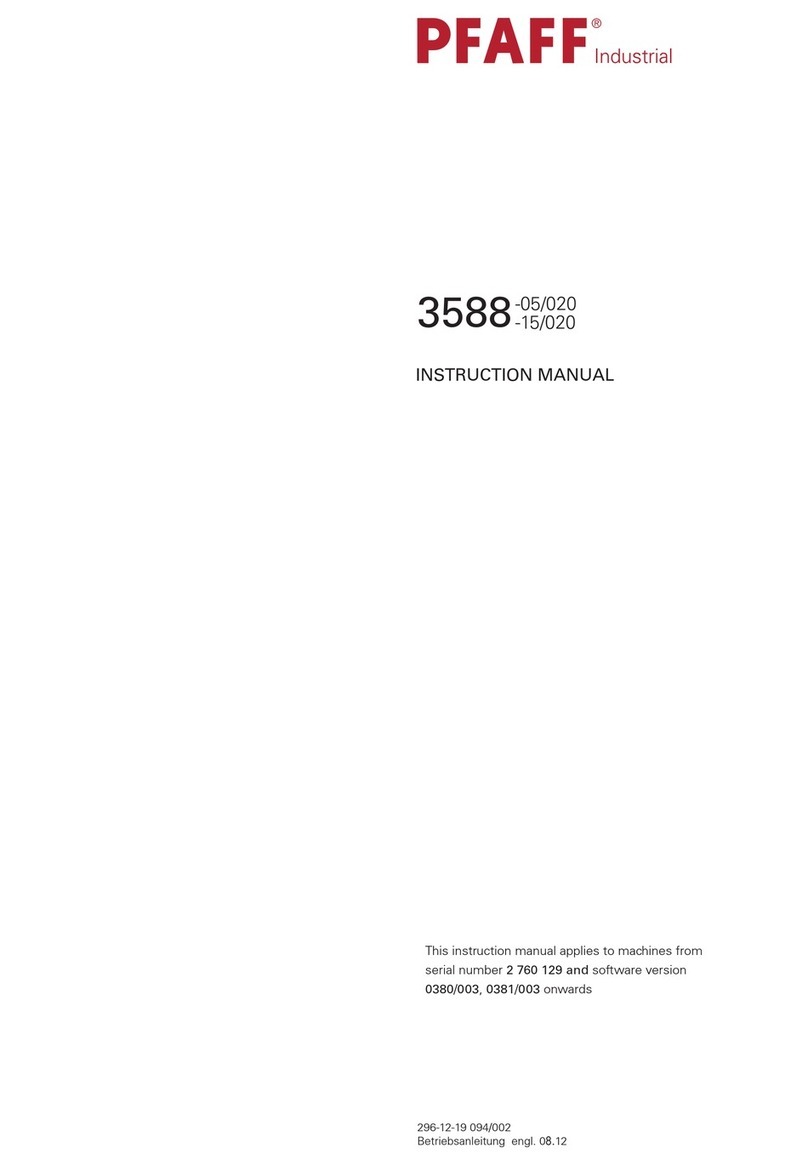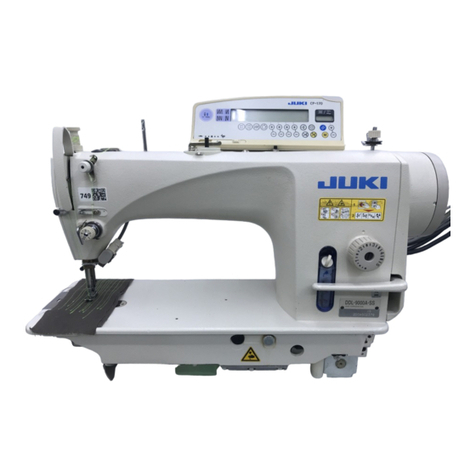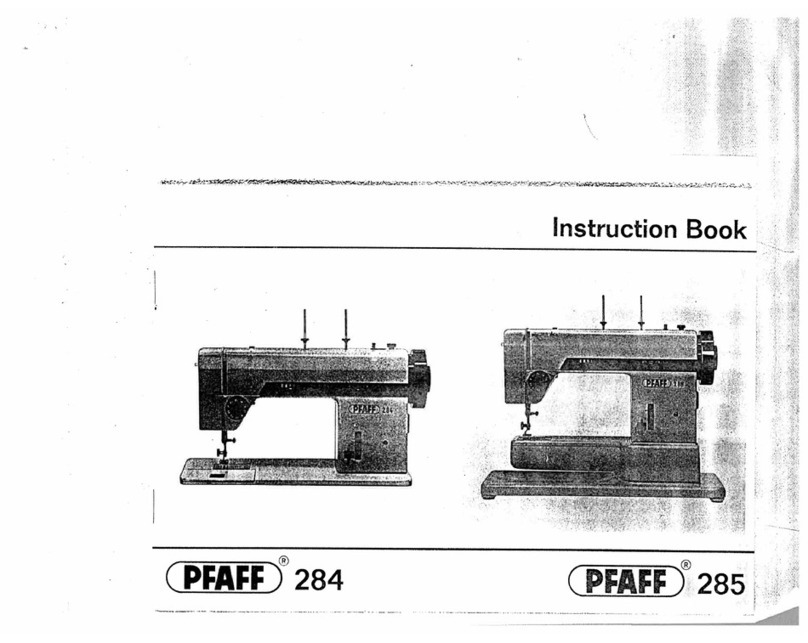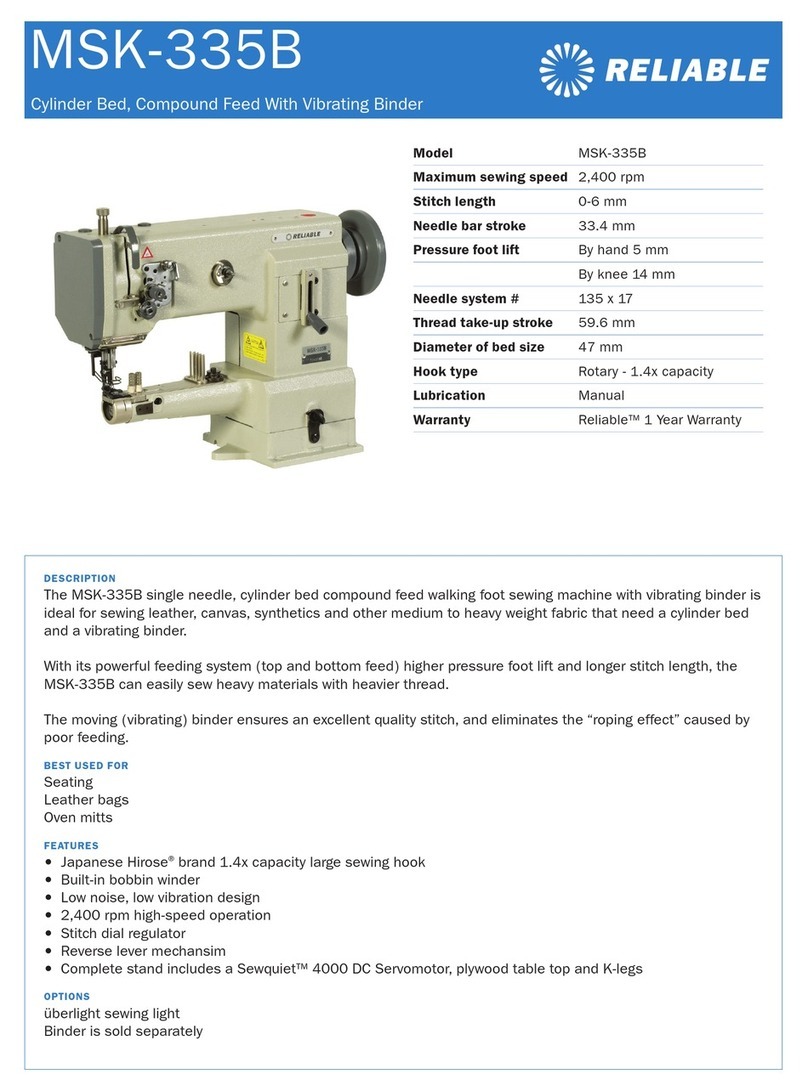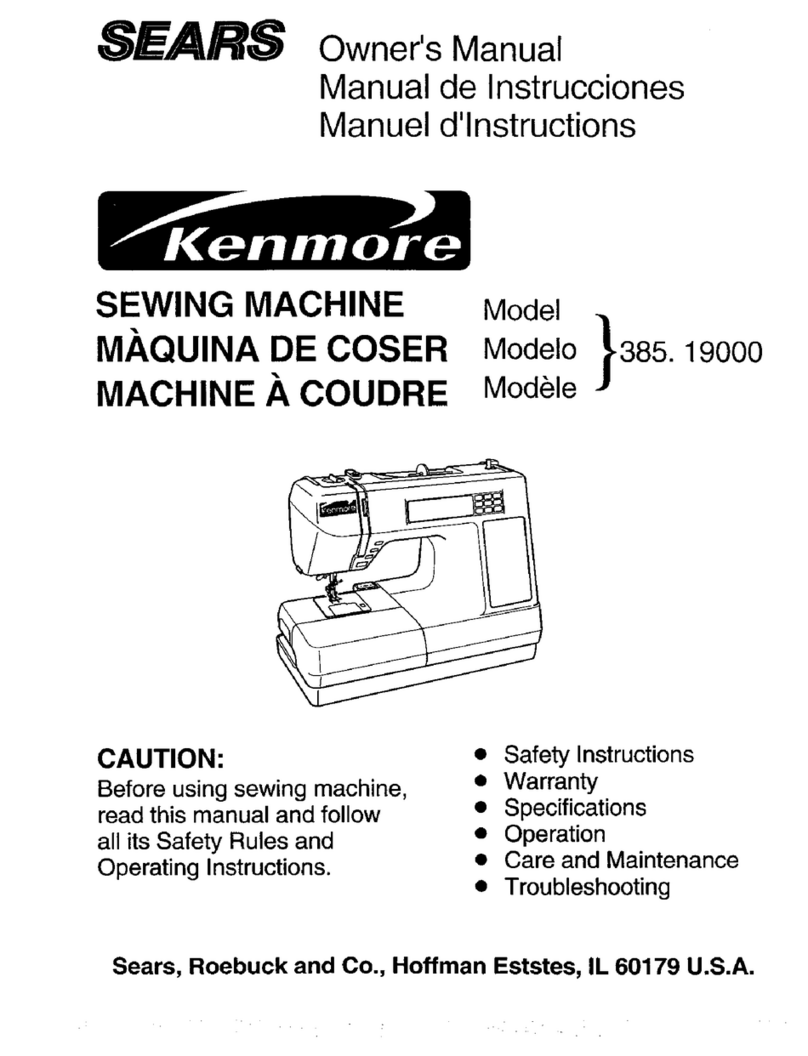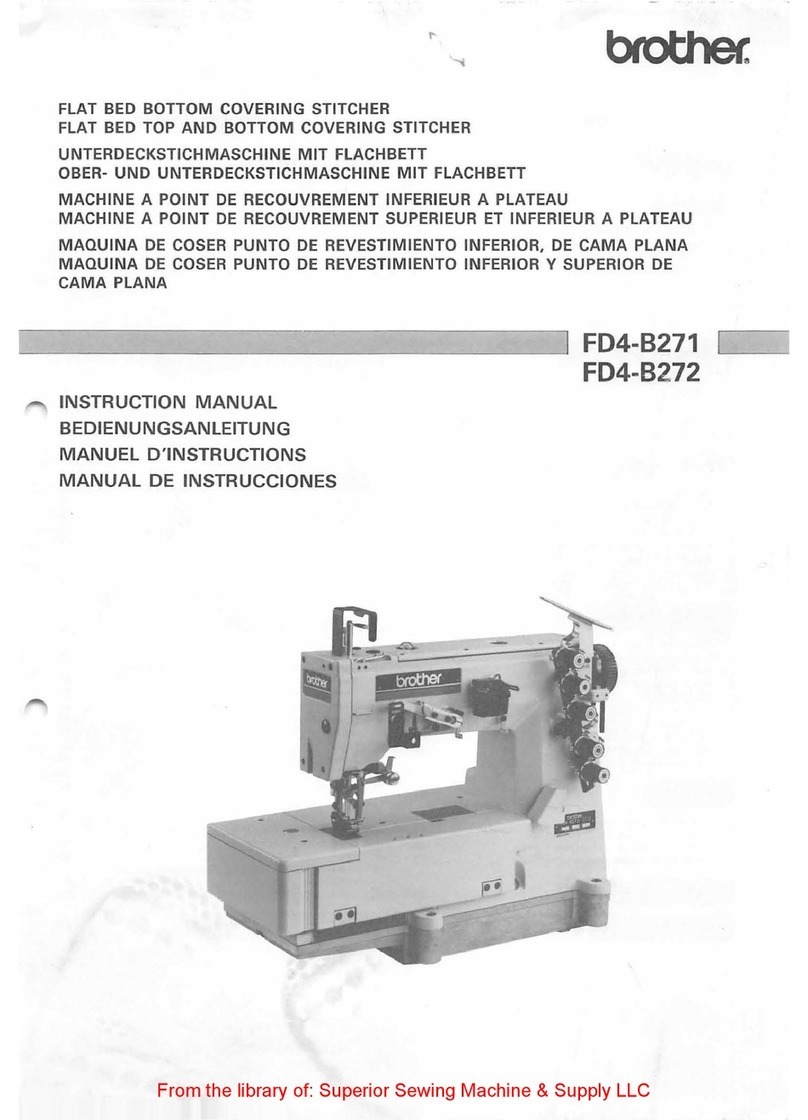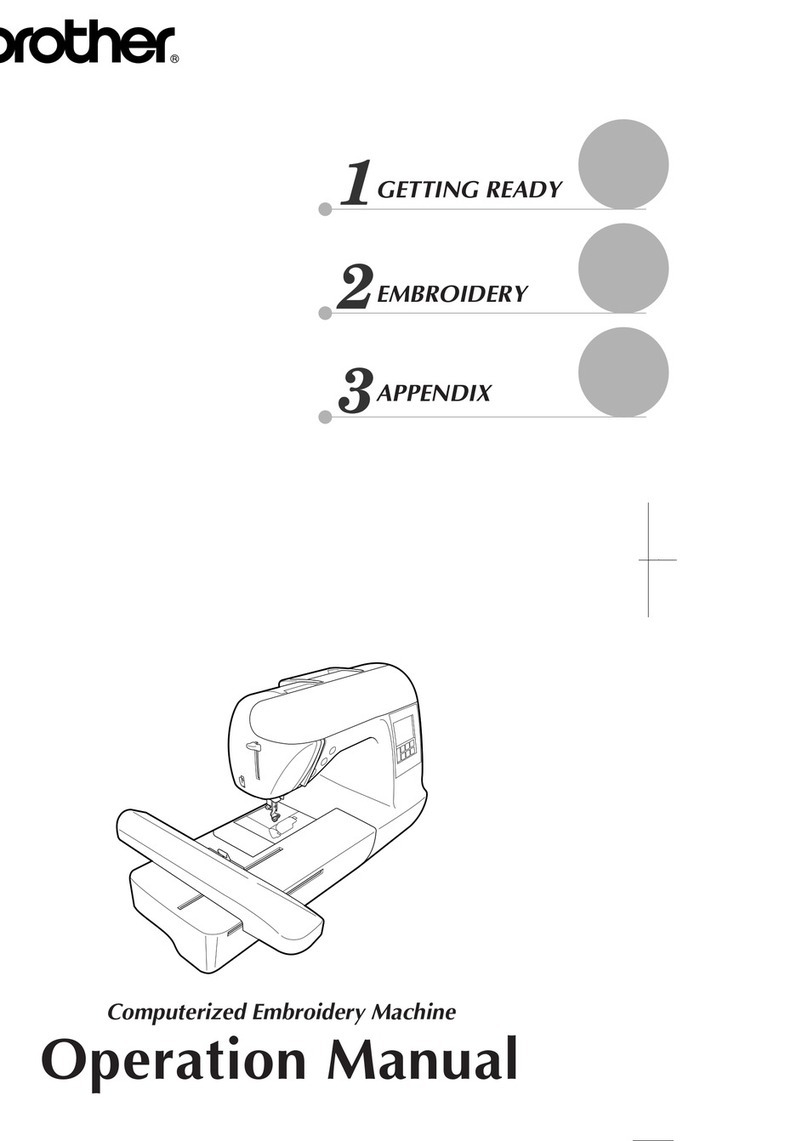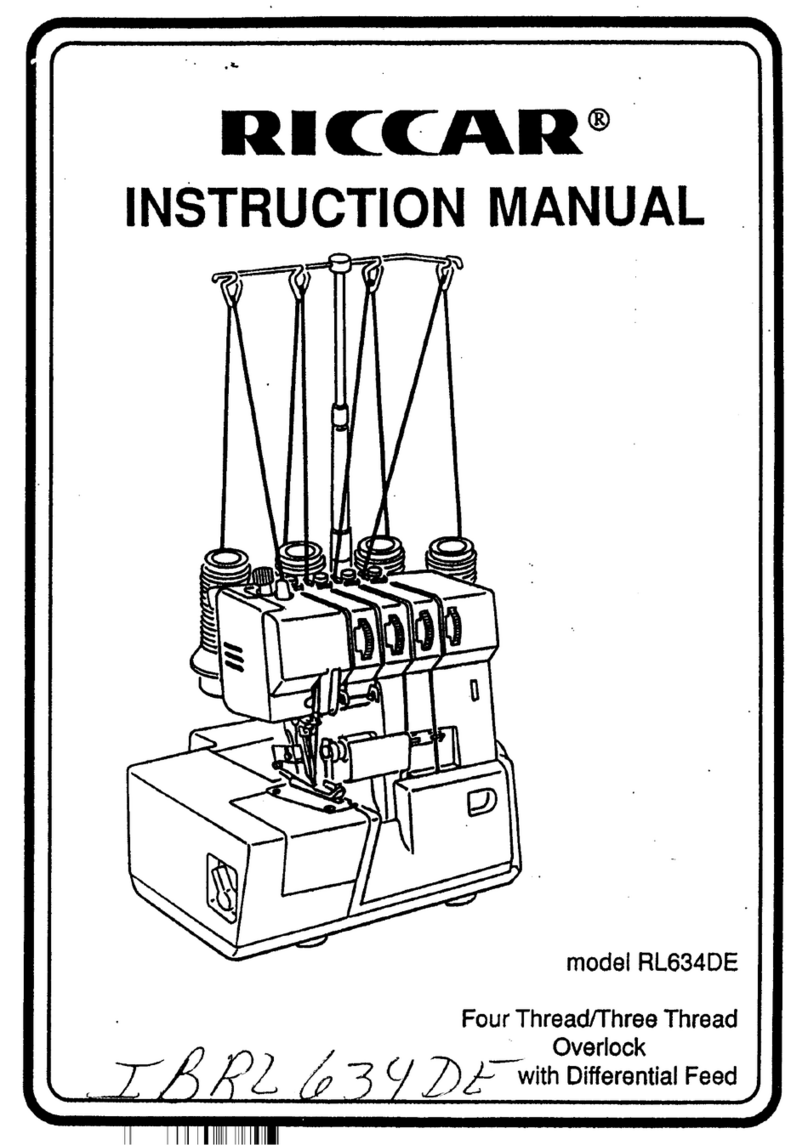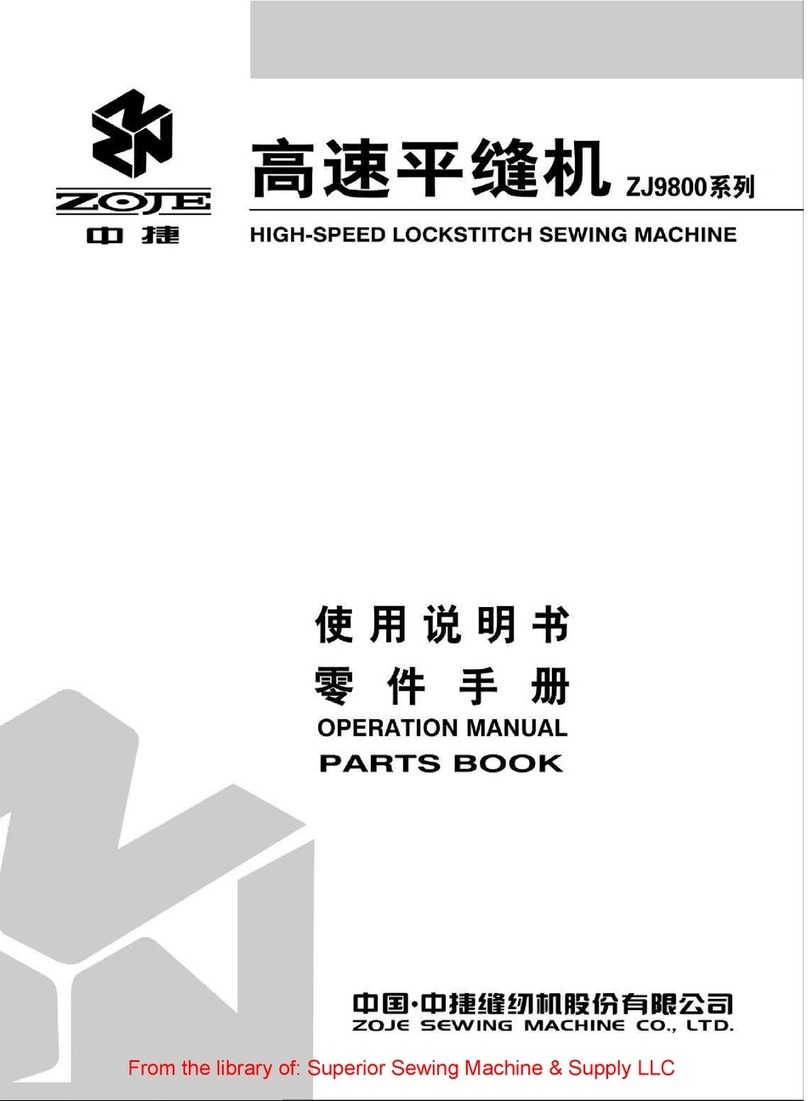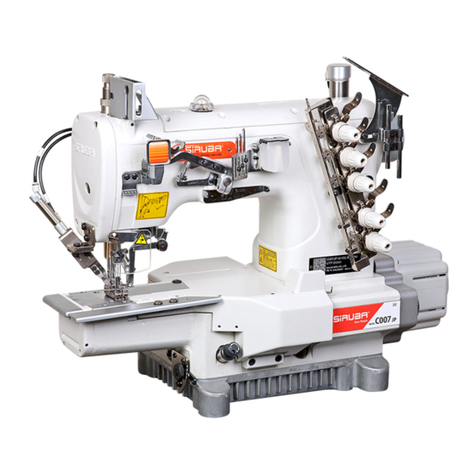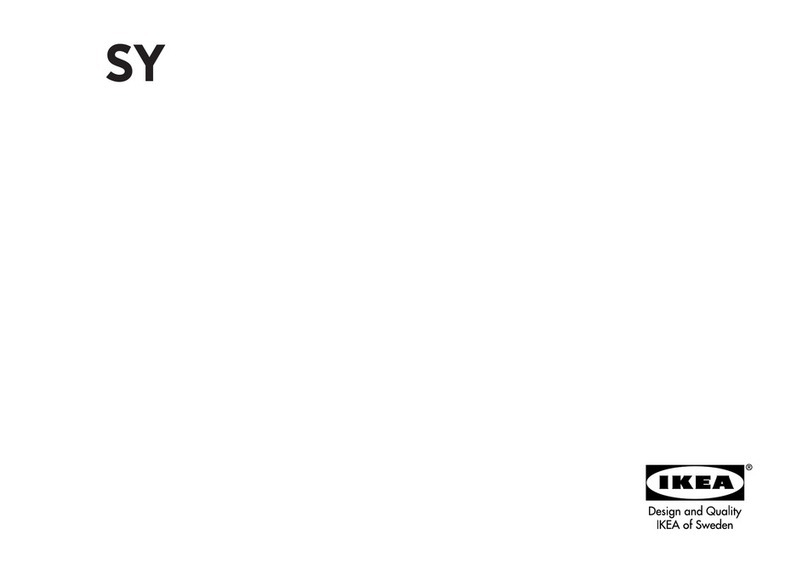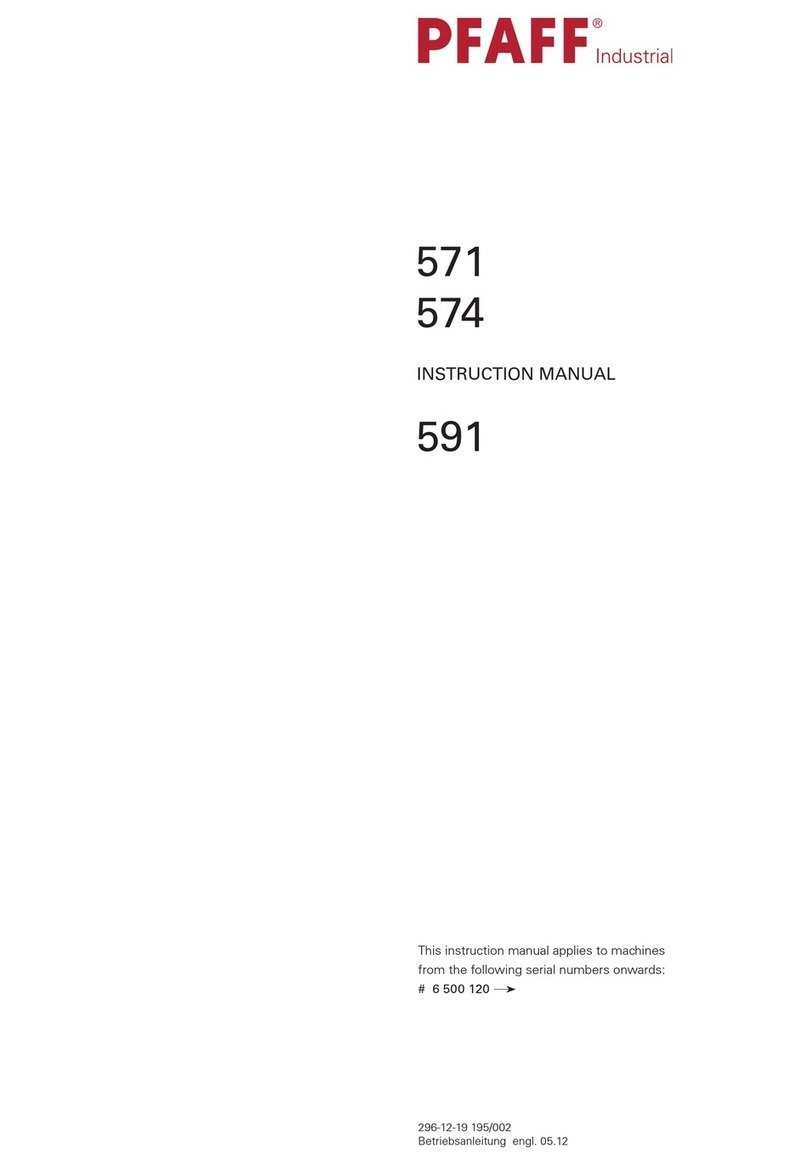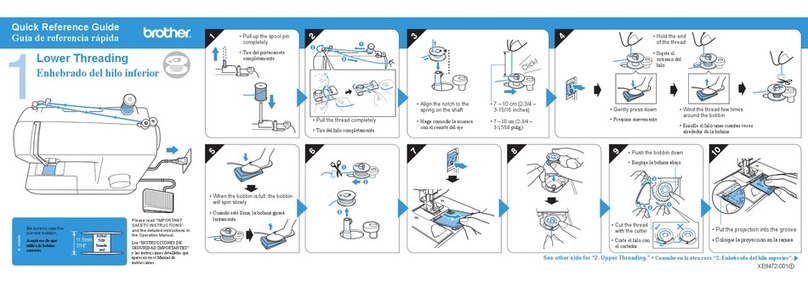DESCRIPTION
Machine
270-37
is a single needle, single thread, lockstitch
machine
designed
for
sewing
two and
four
hole buttons on clothing. The
machine
sews a single
row
of stitches parallel to
the
cylinder
when
sewing
two
hole
buttons
and
two
rows
of stitches parallel to the
cylinder
with two right angle cross-over stitches
when
sewing
four
hole buttons.
Automatic in operation, the machine is equipped with a sewing reel which is located inside
the
hook
body.
Thread
is
wound
on reel
from
upper
thread
supply
during
the Initial needle pene
tration. Then,without a break in thread or interruption
in
machine
cycle, stitch
formation
begins.
Reel
thread is passed
through
upper
thread
loop
on each successive stitch to
form
aregular
lockstitch. Thus only one thread is required to
form
a complete stitch pattern and no stitch
starting ends of thread are present. At the end of the stitching pattern, thread is
trimmed
and
excess thread is
removed
from
reel and
drawn
away by a suction type air
pump.
GENERAL
CHARACTERISTICS
18 Stitches
...
6parallel, 2cross-over, 6parallel,
4tying.
Rotating
Hook with
Thread
Reel
. . .
makes
two
revolutions
to
each
revolution
of arm
shaft.
Rotary Hook
Shaft,
, . driven by spiral bevel gear
from
vertical
arm
shaft.
Throat Plate . . . equipped with scissor type trim
ming mechanism for cutting thread at completion of
stitch
pattern.
Button Clomp . . , accommodates 14 to 50 ligne
buttons.
Work
Plate
...
if specified, at additional cost.
Feed
Cam . . . controls operation of button clamp.
Safety Interlock . . . prevents clamp
from
being
lifted when machine is in operation.
Belt
Guard . . . fully
encloses
driving belt and
stop
motion
device.
TENSION
REGULATOR
PRE-TENSION
PULL-OFF
LOOP
THREAD
GUIDE
RING
FACE
PLATE
THROAT
PLATE
ROTATING
HOOK
WITH
REEL
CYLINDER
COVER
\
BUTTON
CLAMP
r.
ARM
COVER
(SIDE)
BELT
GUARD
COVER
FEED
CAM

